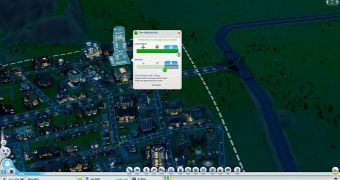When did you last talk to one of your simulated citizens? Were they happy? Did they have any suggestions for how the city should evolve in the future? Did they grumble about more shopping space or the lack of police coverage?
These are questions that traditionally could not be asked about a SimCity title because their focus, despite the name, was on the economic and management models rather than on the citizens that inhabited each urban area.
The SimCity reboot that Maxis has created is entirely different because the team had access to more powerful computers and new development tools that allowed them to actually simulate the needs and aspirations of all citizens and allow the player to see them all via a single click.
In practice, this means I have spent many game minutes waiting for money to accumulate for my next investment while clicking on the various citizens in order to see how they feel about life under my leadership and what I might do to improve it.
This creates a feeling of organic growth that was never present in previous SimCity titles and makes me more interested in designing the best possible city for them, even if the structure of the game actually makes that task pretty much impossible.
The presence of citizens also makes it easier to blame them for their idiosyncrasies, like the fact that they are protesting about health quality even if I have more clinics in my city than police stations.
I would also like to report that I have managed to create my first mini-neighborhood made up entirely of skyscrapers, despite the fact that they lie pretty close to both the garbage dump of the city and the sewage outflow pump.
SimCity is by no means perfect, but when it runs, the new Maxis title makes me feel like a true mayor, dealing with both economic and social problems.

 14 DAY TRIAL //
14 DAY TRIAL //